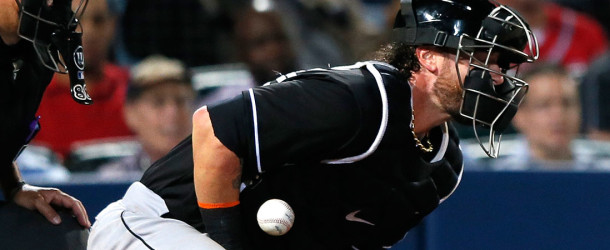The catcher must understand that it is their responsibility and commitment to block every ball in the dirt with runners on base or two strikes on the hitter. The key ingredient to successfully blocking balls in the dirt is anticipation. Knowing when and where the ball might be ensures proper reaction to balls in the dirt. The ability to block provides trust for the pitchers in throwing their best pitches in crucial situations. Blocking balls in the dirt is invaluable to team success.
ALWAYS ANTICIPATE BALLS BEING IN THE DIRT
- Cut the distance between the catcher and where the ball bounces so that the ball bounces off the chest protector. Gaining ground shortens the hop and creates a better angle.
- The distance a catcher can cover will vary. The catcher’s range will dictate the angle at which they cut distance from left to right.
- STRAIGHT AHEAD – The catcher can cut distance or simply go to their knees as quickly as possible. The farther the ball is hitting in front of the plate, the more important it is to cut the distance.
- LEFT OR RIGHT – A common angle for blocking left to right is 45 degrees to cut the ball off. The catcher should always try to block the “outside” of the ball by getting around it to control where it bounces, ideally back toward home plate.
- Soft movements equate to control of the ball when it hits the catcher. The catcher must relax and let the ball hit him.
- After blocking the ball, the catcher must locate the ball quickly, get to their feet and retrieve the ball. The actual blocking of the ball is only half the battle. Keeping the runners from advancing is the true measure of success.
BLOCKING CHECKLIST
A catcher should keep the following keys of blocking in mind:
- KNEES
- Get both knees to the ground in the direction of the ball as quickly as possible.
- Do not jump to the knees. Soft landings make for soft movements.
- GLOVE
- The catcher should lead with the glove and cover the hole between the legs with both the glove and bare hand. The bare hand should be entirely behind the glove. The glove should remain open at all times. The catcher should not try to catch the ball.
- ELBOWS
- The elbows should sink into the correct position when the hands are in the correct position. The ability to flare one’s elbows out creates a bigger target for the ball to hit. In doing this, the catcher’s shoulders will stay squared to the ball.
- CHIN
- The chin should go directly down to the chest to locate the ball on the ground.
- This movement will cause the shoulders to round and be over the ball, creating a good angle for the ball to bounce off the catcher.
- The catcher needs to keep their eyes open to locate the ball quickly.







Comments are closed.